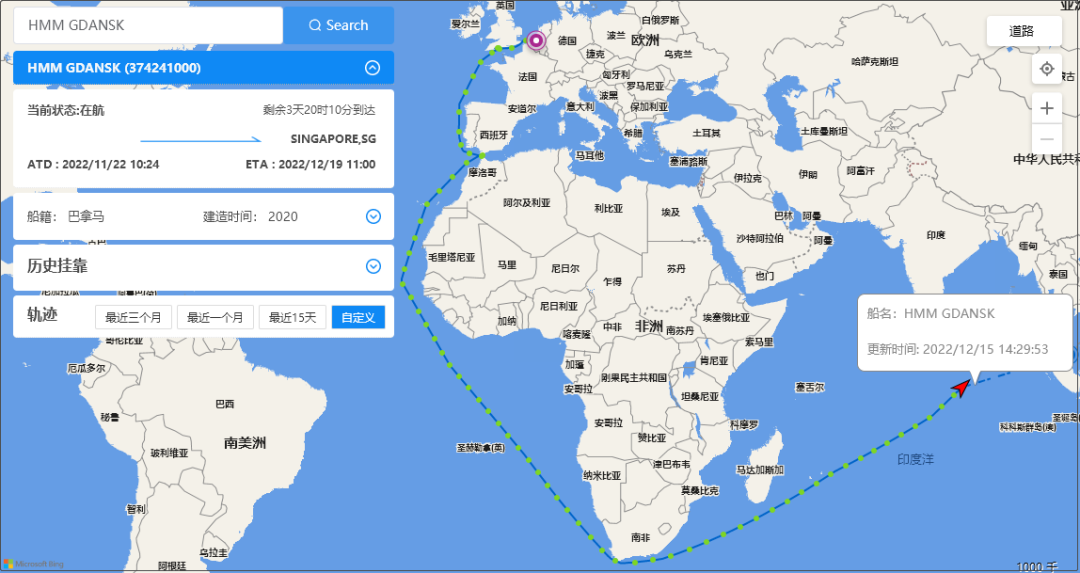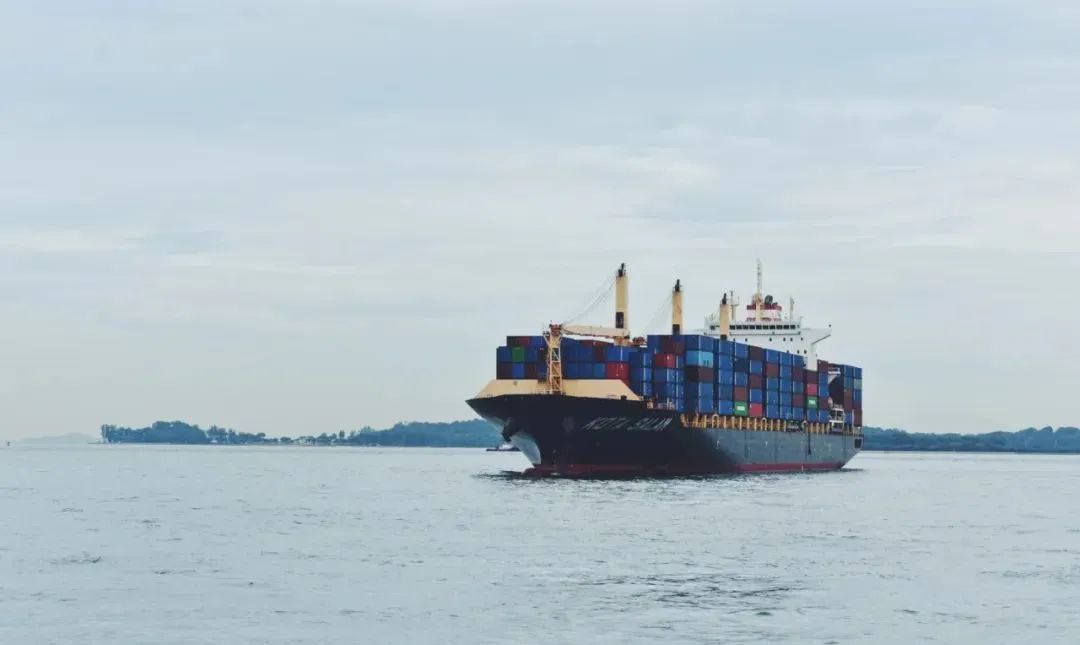It is reported that in the near future, during the return voyage from Europe, some container ships avoided the Suez Canal and chose to return to Asia south of Africa.
Alphaliner pointed out in its latest weekly report that 13 container ships have avoided the Suez Canal since late November, and chose a return route with slower speed and higher fuel consumption.
These 13 ships are super large container ships with a capacity of 14,000teu-24000teu, and they are all ships affiliated with The Alliance member ship company.

The container ship "HMM GDANSK" (23,964teu) the navigation trajectory of the last month
Disted freight demand, plunge in freight rates, and excess capacity have led some ship companies to make the ship diverted in the corner of the ship in the return journey from Europe to the Far East, thereby effectively cutting capacity and avoiding the high traffic expenses of the Suez Canal.
The Alphaliner reports that container transportation companies can save hundreds of thousands of dollars in each sailing by saving hundreds of thousands of dollars in each sailing.
Take the navigation from Rotterdam to Singapore as an example. Compared with the Suez Canal, reaching Singapore around the African continent increased the distance of about 3,500 nautical miles. The database ship sailing at about 16 sections, which means that bypassing will increase the navigation time of the container ship by 9 days.
However, some ships even sail at a slower speed, about 10.5 sections, which will increase the overall navigation time of about two weeks.
According to the calculation of Alphaliner, at the current price, the total fuel cost from Rotterdam to Singapore is about $ 392,000 to $ 440,000, and the cost of super large ships will be as high as about $ 1 million through the Suez Canal, which means that this means With bypassing, shipping companies can save about $ 600,000.

At the same time, the return time of the return trip was extended for 9 to 14 days, and the capacity was reduced in disguise. Alphaliner reports that similar practices may increase in the next few weeks.
However, this detours increased carbon dioxide emissions. It is ironic that the detour to increase the voyage distance and increase the amount of carbon emissions. According to the calculation method of the CII of the carbon strength index, this will not have a negative effect on the rating of the ship, because the additional discharge carbon dioxide will be longer. The voyage distance offset.
From January 1, 2023, the carbon intensity indicator (CII) specification will officially take effect. MSC and Herbelot have previously called on the International Maritime Organization (IMO) to modify the calculation method of this regulation to avoid accidental consequences of distorting ship performance. (For details, you can view: the new regulations of sea transport reduction will take effect! MSC and other ship companies call for modification to modify the calculation rules)
The International Shipping Association (ICS) also previously issued a statement stating that although the ship's own performance is good, the operating conditions including sea conditions, weather conditions and waiting time in ports or anchors will have a significant impact on the CII rating of the ship; ship routes also It may change due to the CII rating, because longer routes can increase ship rating, especially when fuel prices have decreased.
Previous:Both Wudang and Shaolin are here!
Next:The United States announced the extension of the import tariff exemption of Chinese goods for nine m